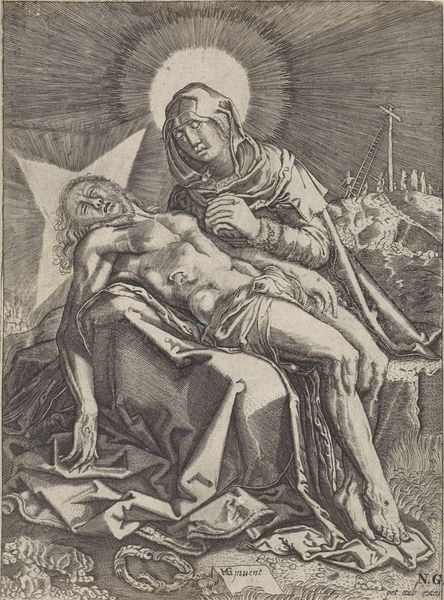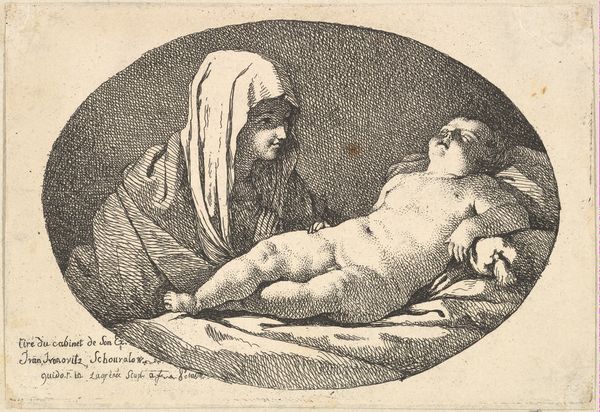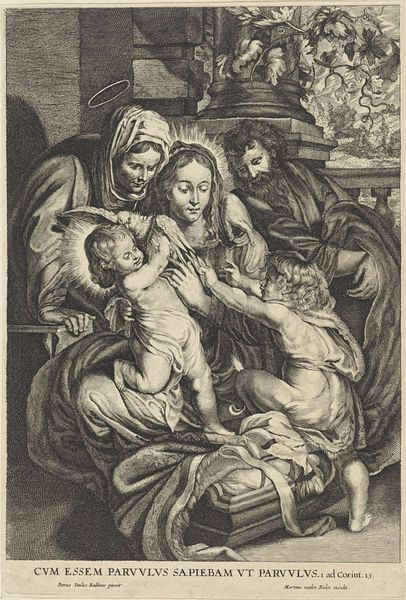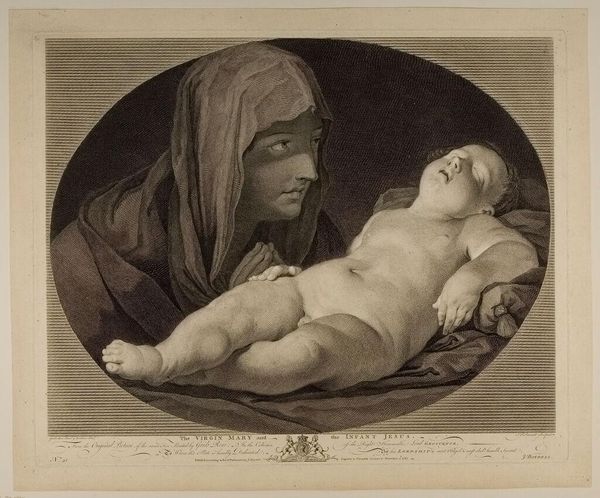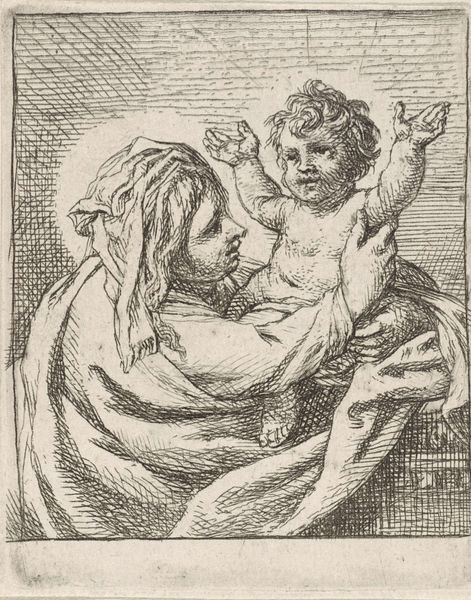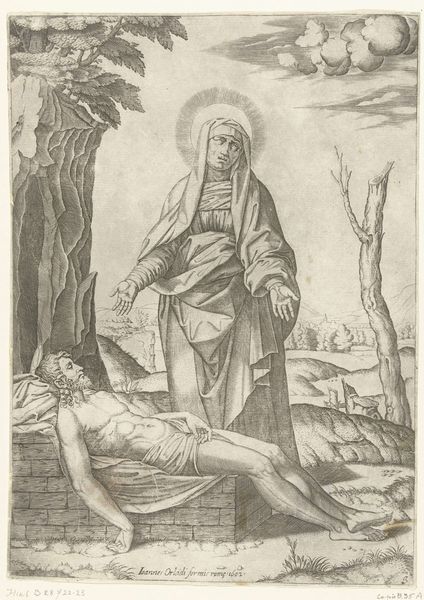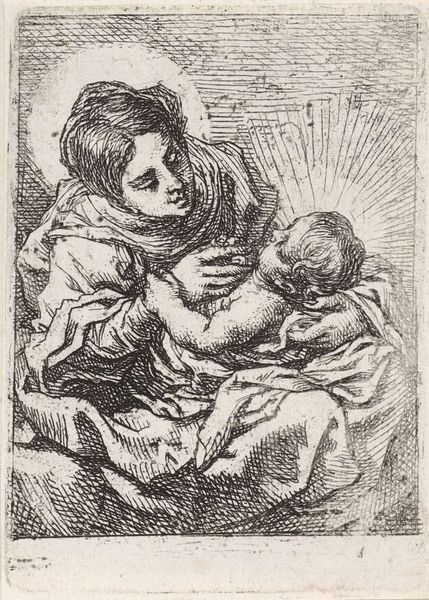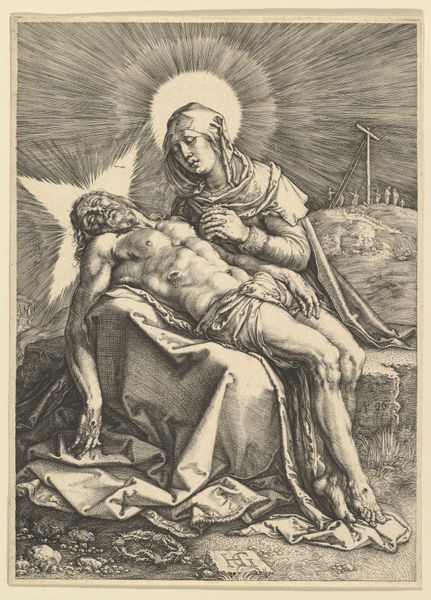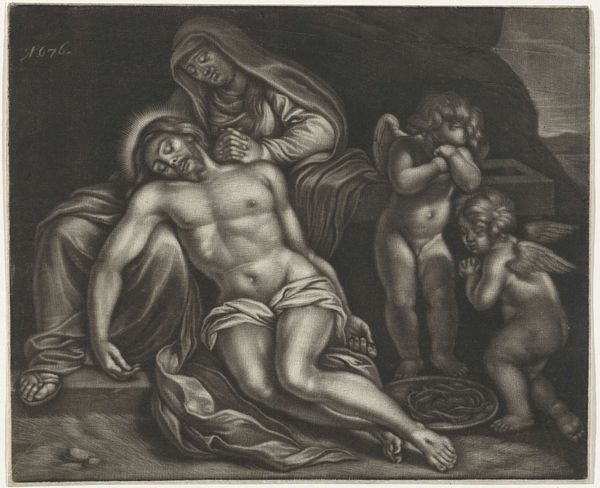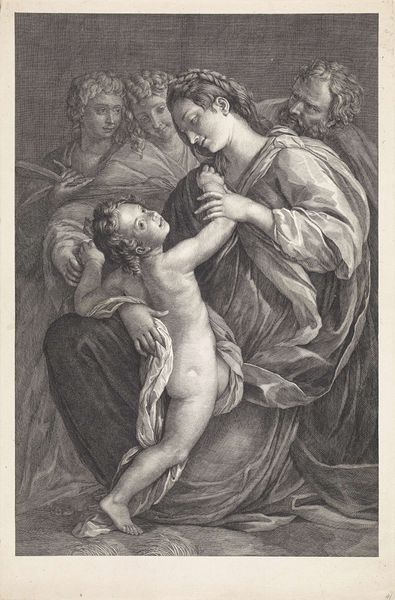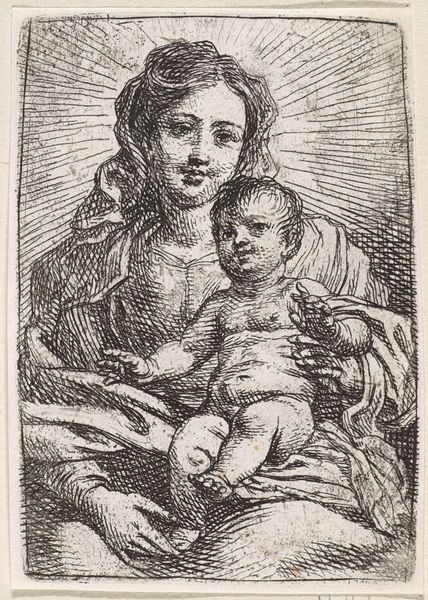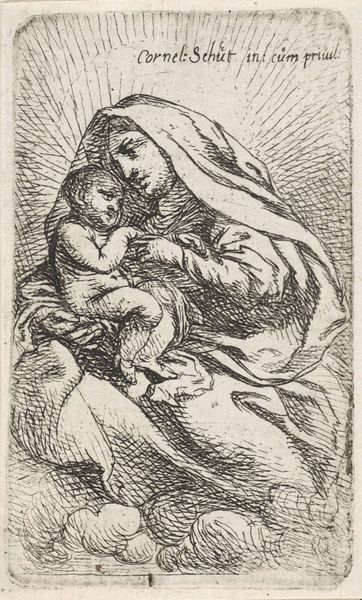
drawing, print, etching, intaglio, paper
#
portrait
#
pencil drawn
#
drawing
#
baroque
# print
#
etching
#
intaglio
#
figuration
#
paper
#
pencil drawing
#
portrait drawing
Dimensions: height 292 mm, width 270 mm
Copyright: Rijks Museum: Open Domain
Editor: Here we have Pieter Fransz. de Grebber’s “Maria met kind,” created in 1651. It’s an etching, an intaglio print on paper. It’s quite striking, almost austere in its depiction of motherhood. How do you interpret this work? Curator: I see this piece as deeply entrenched in the socio-political fabric of 17th-century Holland. It isn’t just a religious depiction; it is a potent articulation of power dynamics. How does the portrayal of Mary, seemingly older and world-worn, challenge or reinforce patriarchal structures of the time? Editor: She doesn't conform to the typical idealized Madonna, that's for sure. She appears almost severe. Curator: Exactly! Consider the historical context: the rise of the Dutch Republic, the ongoing religious conflicts, and the burgeoning merchant class. How might this representation of Mary resonate with, or even challenge, societal expectations of women and their roles in family and community? Do you notice any contemporary visual elements? Editor: Well, the light emanating from behind her is striking; it does reference traditional religious iconography. Curator: But think about its source – is it divine, or is it illuminating something more earthly, more grounded in the social realities of the era? Is the blanket an indication of modesty, of domesticity, or could it be interpreted as protective or even suffocating? De Grebber also was involved in art dealing – how did his political activity interact with art making? Editor: I never thought about the blanket in that light; or about his occupation interacting with art making. I guess there's a dialogue happening between the religious subject and the viewer, almost asking us to reconsider the common narratives we associate with this imagery. Curator: Precisely! By examining the piece through the lens of feminist theory and social history, we can start unpacking those complex layers. Editor: It’s incredible how much more I see in it now, realizing the visual language has such intersectional narratives embedded within the art. Curator: Indeed. Engaging with art requires engaging with the world around it.
Comments
No comments
Be the first to comment and join the conversation on the ultimate creative platform.
